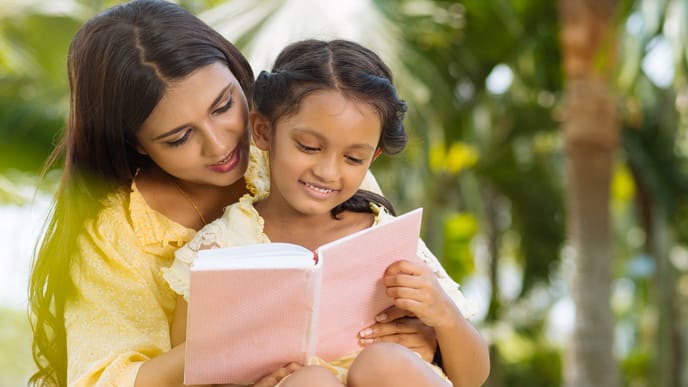-
-

TEETH WHITENING
What Is Stannous Fluoride Toothpaste?Stannous fluoride toothpaste helps prevent cavities, reduce sensitivity, fight plaque, and support daily gum and enamel health.

Selecting Dental Products
Best Toothpaste in India: Five Dentist-Recommended TypesToothpastes today are formulated to meet your every dental need and come in many flavours. Have your dental professional suggest the best toothpaste in India.
-
Science & Innovation
- ORAL HEALTH CHECK
- PRODUCT MATCH
- Colgate® | Toothpaste, Toothbrushes & Oral Care Resources
- Oral Health
- Teen Oral Care
- When Overbite Correction Can be Beneficial


There is something pleasing to the eyes about a clean, white and perfectly aligned set of teeth. Turn on the TV, flip open a magazine or head to the movies and you are inundated with picture-perfect smiles. But not everyone's teeth are like that from the start; many kids and adults suffer from a malocclusion, one type of which is an overbite. Before considering methods of overbite correction, let us define what the condition is and the reasons it may occur.
Malocclusions
The term "occlusion" refers to the alignment of your teeth. Therefore, a malocclusion is a deviation or misalignment from a normal occlusion. Overbites, crossbites, underbites and open bites are all types of malocclusions. Overbites are present when the upper teeth stick out too far beyond the lower teeth.
Malocculsions can fall into one of three categories. Class One indicates when a normal bite is accompanied by a slight overlap of the upper teeth. This is the most common malocclusion. Class Two is diagnosed when the overbite is severe, often known as a retrognathic. Class Three, on the other hand, is a severe underbite – when the lower teeth overlap the upper teeth. It's referred to as prognathic.
Overbite Causes
Although some overbites are hereditary, others are caused by a malformed jaw. Jaws can actually grow unevenly under the pressure of certain habits when a child is young, resulting in an underdeveloped lower jaw or an overdeveloped upper jaw. Habits formed during early childhood, for example – such as thumb-sucking, prolonged bottle-feeding or tongue-thrusting – can cause this overbite. And habits developed later in life, such as eraser head-chewing or nail-biting, can form an overbite as well.
Methods of Correction
The most common treatment method for an overbite is orthodontics. After examining your mouth and jaw positioning, your orthodontist can determine the course of treatment that is most compatible with your or your child's misalignment. The orthodontist will first x-ray the teeth and take impressions; this allows him to better understand the alignment of the upper and lower jaws. Dental braces are then the next step for the purposes of straightening teeth, but the form they take depends on how much correction is needed. Using elastic bands or similar appliances, treatment can range from a year to two years or more. It is all based on the gravity of the overbite.
There is no age limit on when an overbite can be treated, but it is easier to fix in younger children because their jaws have not fully developed. Severe overbites might necessitate a tooth extraction, enabling other teeth to move into place more easily; whereas other malocclusions require a surgical procedure to reposition the jaw. Bring your child or children to see an orthodontist during their elementary years to determine if orthodontics will be needed as a treatment in the future.
Nothing brings a smile to your face like, well, a nice smile. If your teeth suffer from an overbite, talk to your dentist about overbite correction. Before you know it, you and your kids will be the ones with the smiles people notice.
This article is intended to promote understanding of and knowledge about general oral health topics. It is not intended to be a substitute for professional advice, diagnosis or treatment. Always seek the advice of your dentist or other qualified healthcare provider with any questions you may have regarding a medical condition or treatment.
ORAL HEALTH QUIZ
What's behind your smile?
Take our Oral Health assessment to get the most from your oral care routine
2.3 billion
people worldwide suffer from tooth decay
ORAL HEALTH QUIZ
What's behind your smile?
Take our Oral Health assessment to get the most from your oral care routine
2.3 billion
people worldwide suffer from tooth decay
Related Articles

Mouth sores and infections
What Are Canker And Mouth Sores?Learn why your gums might be white or pale. From canker sores to serious conditions, get insights on symptoms, diagnosis & effective treatments for healthy gums.

Dental emergencies and sports safety
Instant Relief from Tooth Pain: Essential TipsDiscover straightforward remedies on how to relief from tooth pain. Learn essential techniques to alleviate tooth pain and restore comfort effortlessly.

Adult Oral Care
Dental Health Care: What Is It & What Does It Mean to You?What exactly is dental health care, and what does it mean to you? Visit Colgate now and learn the main aspect of dental health care and why it's important.
Related Products

Helping dental professionals
More professionals across the world trust Colgate. Find resources, products, and information to give your patients a healthier future







